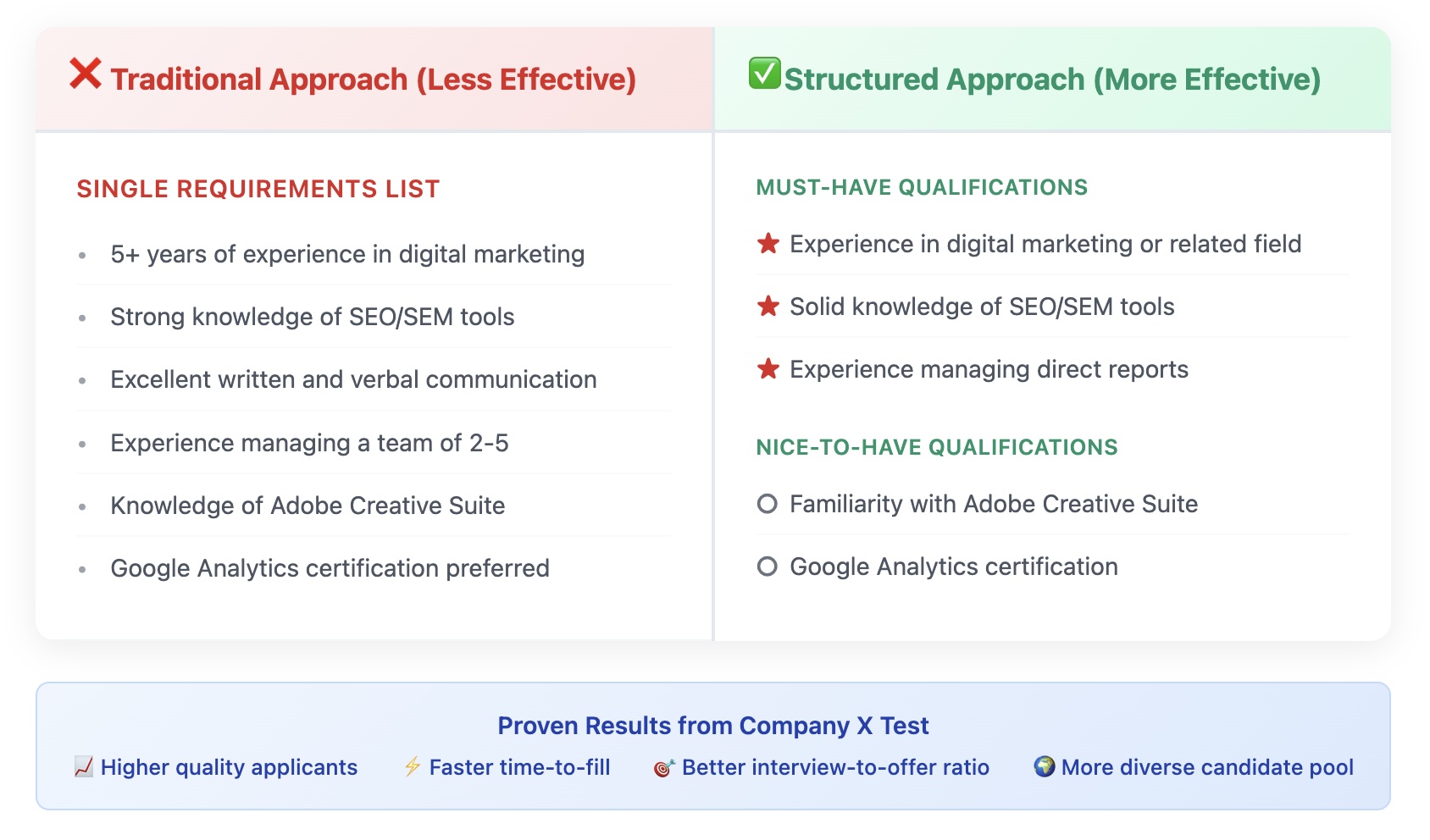Benefits,
Caring ,
Employee Well-being
Consider these practices to help every employee in your organization thrive.
In the immediate aftermath of the pandemic, employee well-being became a top priority for company leaders.
Yet, despite years of investment, measures of well-being in the workplace have stagnated. In a 2023 market survey of 4,400 U.S. employees, Great Place To Work® found that the number of employees reporting a psychologically and emotionally healthy workplace hasn’t changed much since 2021. At the typical U.S. workplace, 55% of employees have a healthy work environment, a two-point difference from 2021.
By contrast, other elements of the employee experience have improved for employees at a typical U.S. workplace. The percentage of employees reporting a healthy work-life balance has increased 13 points and the number of employees reporting fair pay is up nine points over the same period.
What builds well-being for employees?
A study published in the Industrial Relations Journal found that most well-being programs — from apps and relaxation tools to classes in time management and financial health — had no positive effect on employee well-being.
“If employees do want access to mindfulness apps and sleep programs and well-being apps, there is not anything wrong with that,” William J. Fleming, the author of the study told The New York Times. Instead, Fleming says that addressing core practices around scheduling, pay, and performance are more important for employers who hope to drive better well-being outcomes.
Attend our annual company culture conference May 7-9, 2024
What does drive better outcomes for employees? Offering a high-trust workplace culture.
In a study with Johns Hopkins University, Great Place To Work identified five elements of the employee experience that drive higher levels of well-being:

1. Mental and emotional support. It matters if you can maintain a positive outlook, even in the face of adversity. Within an organization, optimism and positive energy build into what is called “psychological capital” — a reservoir of goodwill that companies can draw on in hard times.
2. Sense of purpose. Nearly half of respondents in the 2023 market survey (46%) said they did not have meaningful work. In John’s Hopkins research, this experience gap is key in explaining why only one in six employees globally are “flourishing.”
3. Personal support. Mangers can affect employee well-being — for better or worse. UKG data suggest managers affect mental health more than therapists or doctors. At the companies on the 2024 Fortune 100 Best Companies to Work For® List, 84% of employees say management shows a sincere interest in them as a person. In our 2023 market study, only 58% said the same at an average workplace.
4. Financial health. If you are worried about money, other aspects of well-being suffer. Great workplaces are increasingly focused on financial health, offering tools and programs to help employees build a strong financial foundation.
5. Meaningful connections. Employee well-being hinges on how connected workers feel to their colleagues and to management. In the Johns Hopkins study, 25% said they feel lonely at work and 30% said they do not feel a sense of belonging.
What sets the 100 Best apart?
Most companies have well-being initiatives, offer health benefits, and provide an employee assistance program (EAP). Yet, when you look at companies on the 100 Best list, employees report higher levels of well-being than at a typical U.S. workplace.
What, then, are these companies doing to produce better outcomes? Here’s what Great Place To Work has found:
1. Ask questions to identify barriers to well-being
The Best Workplaces ask simple questions:

- What do you want?
- What do you need?
- What would be meaningful to you?
These questions will uncover roadblocks that prevent employees from thriving. Even better, the roadblocks are often simple to remove. Actions that we see increasing the number of employees that use well-being benefits include:
- Not requiring a receipt for reimbursement
- Providing 100% coverage for mental health benefits
- Bringing health care providers to a work site
- Adjusting schedules to make time for wellness activities
- Making services available after hours
At Comcast NBCUniversal, No. 10 on the 100 Best list, the EAP offers personal counseling 24/7 to support employees and household members, with up to 10 free counseling sessions per household member. At American Express, No. 4 on the 100 Best, on-site wellness centers can be found at its four biggest U.S. locations, with a staff of nurses, nurse practitioners, and doctors who offer acute care, screenings, immunizations, and more.
2. Get innovative ideas from your employee resource groups
Employee resource groups (ERGs) are important sources of information for organizations, and can be helpful partners when trying to roll out a new program.
Some companies will create employee councils to focus on well-being. At Wellstar Health System, an Atlanta-based hospital group ranked No. 96 on the 100 Best, well-being efforts are driven by a cabinet of clinical, executive, and operations leaders to develop strategies.
ERGs can also ensure every employee has meaningful work, and can access professional development resources. At Dow, No. 79 on the list, ERGs are tasked with promoting well-being as one of the company’s many measurable goals that determine success. Dow’s Women’s Inclusion Network successfully advocated for stronger parental leave policies, with new parents now having 16 weeks of paid leave regardless of gender.
3. Align benefits to the needs employees share with you
What makes a successful well-being benefit? The only metric that should matter is how employees feel about it.
PwC, No. 22 on the 100 Best list, increased support for health care services for nonbinary and transgender employees after hearing from its workforce about how meaningful that support would be. Now the company covers up to $75,000 of medical costs for specific procedures related to gender-affirming care.
“Because of the stress of transitioning, emotionally and physically, the financial support from an employer makes a huge difference,” shares DeAnne Aussem, well-being leader for U.S. and Mexico.
What will have the biggest impact will depend on the specific needs of your people. Employee surveys and other listening programs are crucial to collect feedback.
4. Connect well-being to business performance — and make leaders accountable
At Accenture, No. 7 on the 100 Best, well-being is an essential indicator of overall business success. The professional services leader believes that when employees are healthy, with meaningful work and strong connections to colleagues, they are more productive.
Importantly, Accenture measures outcomes carefully.
“We’re committed to putting scientific rigor behind what we do—making sure the tools, support, and efforts we provide are equitable, holistic, and delivering desired outcomes,” says Dr. Tamarah Duperval-Brownlee, chief health officer at Accenture.
“Understanding (from anonymized data) trends around how utilization of health and well-being benefits influences metrics, like attrition and engagement, can help inform whether we’re moving in the right direction and the impact we’re delivering for our people.”
5. Take action to influence the big picture
An individual’s well-being is affected by more than their workplace. World events and personal tragedies impact every employee in your organization.
The 100 Best acknowledge this reality, in both group settings and in one-on-one interactions. At Cisco, No. 2 on the 100 Best, two-way communication doesn’t just happen when the company has good news to celebrate. Employee communications channels provide accurate, unfiltered information and offer empathy when employees are facing a dark time.
Cisco also holds “Cisco Check Ins,” 90-minute virtual events where leaders respond to employee concerns and get honest feedback on what is and isn’t working. More than eight in 10 (86%) said that these check-ins were “an excellent use of time” and that “leaders provided clear answers to questions.”
“Love how the leadership team started with situational awareness about what is going on in the world, how it impacts employees, and how we can help,” shared one employee in a survey.
At Wegmans Food Markets, No. 6 and the highest-ranked retail company on the 100 Best list, a regular cadence of one-on-one meetings with managers is a crucial listening channel that improves well-being. Employees also have access to an employee advocate, individuals that serve at each Wegmans store as someone employees can turn to for support.
“Since the role originated in 1986, it has evolved from a traditional HR staffing function to one of advocacy, support, and caring for our people,” says Peggy Riley, vice president of employee communications and engagement. “Advocates provide confidential, exclusive, dedicated support, and many locations have two full-time advocates to support their people. They offer an objective point of view and provide a safe space for our people to seek guidance to find resources and development opportunities, resolve personal and professional issues, access benefits, and more.”
Learn from the experts
Get more great ideas for your workplace culture by attending our For All™ Summit in New Orleans, May 7-9.











